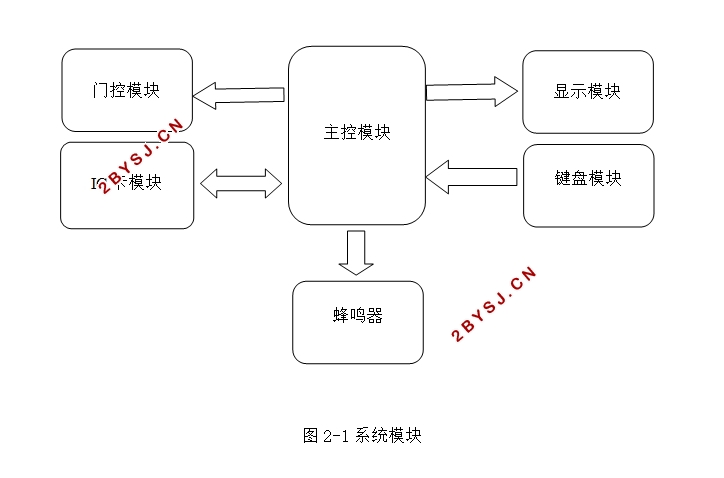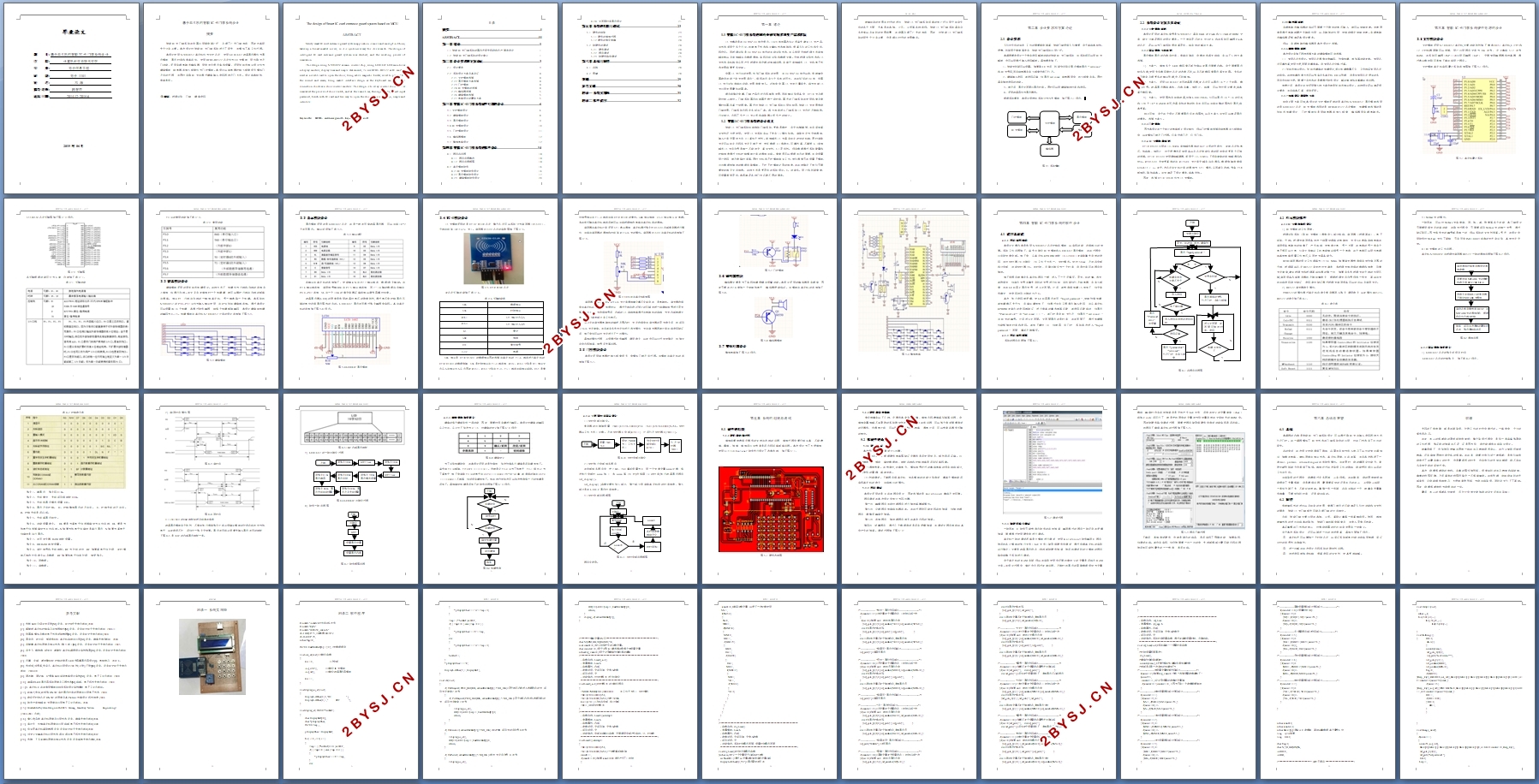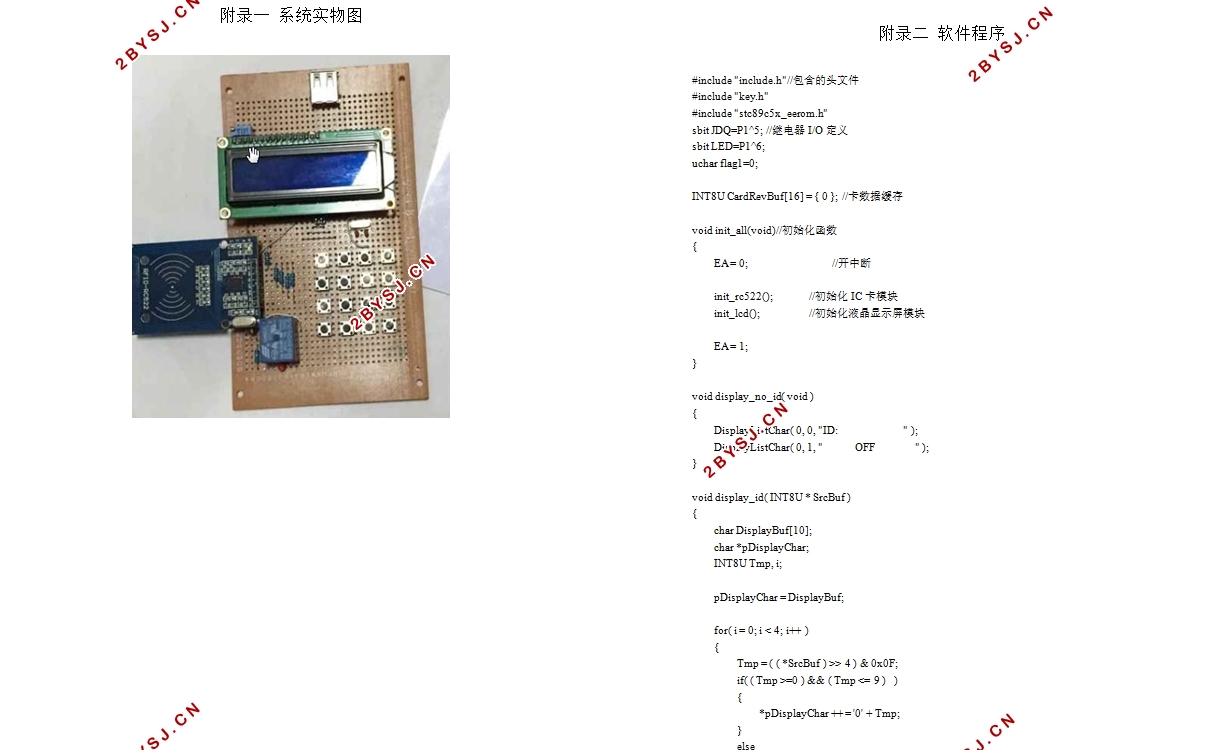基于单片机的智能IC卡门禁系统设计
无需注册登录,支付后按照提示操作即可获取该资料.
基于单片机的智能IC卡门禁系统设计(任务书,外文翻译,论文11000字)
摘要
智能IC卡门禁系统在中国应用越来越广泛,占据了广大门禁市场,因此对其研究十分有必要。本次设计对智能IC卡门禁系统进行了研究,并模拟了其工作过程。
本设计使用STC89C52单片机作为主控芯片,使用LCD1602液晶显示器作为显示模块,显示时间和简单语句;使用RFID-RC522芯片作为IC卡模块,用作刷卡开门功能;采用有源电磁式蜂鸣器,用来发出提示音和报警;采用矩阵式接口设计作为键盘模块,继电器连接二极管作为门控模块。本设计以继电器控制二极管明灭模拟门开关的过程,并同时有刷IC卡与通过键盘输入密码两种开门方式。设计成本较低,简单直观。
关键词:射频识别 门禁 键盘密码
The design of Smart IC card entrance guard system based on MCU
ABSTRACT
Study smart IC card entrance guard system application is more and more gf in China, takes up a broad market access, so it is quite necessary for its research. The design of intelligent IC card entrance guard system was studied, and the working process of simulation.
This design using STC89C52 as main control chip, using LCD1602 LCD monitor as a display module, display time and simple statements; To use RFID - RC522 as IC module, used as a credit card to open the door; Using active magnetic buzzer, used to prompt for the sound and alarm; Using matrix interface design as the keyboard module, relay connection diode as a door control module. This design is to relay control diode flicker simulated the process of door switch, and at the same time, through the keyboard input password, brush with IC card and two way to open the door. Low cost design, simple and intuitive.
Keywords: RFID;entrance guard;keyboard password



目录
摘要 I
ABSTRACT II
第一章 绪论 1
1.1智能IC卡门禁系统的国内外研究现状和生产需求状况 1
1.2 智能IC卡门禁系统的设计意义 1
第二章 设计要求和方案论证 3
2.1 设计要求 3
2.2 系统设计方案及其论证 4
2.2.1主控模块选择 4
2.2.2显示模块方案选择 4
2.2.3门控模块 4
2.2.4 IC卡模块的选择 4
2.2.5蜂鸣器选择 5
2.2.6键盘模块选择 5
2.2.7电路设计的最终方案 5
第三章 智能IC卡门禁系统硬件电路的设计 6
3.1主控模块设计 6
3.2 键盘模块设计 8
3.3 显示模块设计 9
3.4 IC卡模块设计 10
3.5 门控模块设计 11
3.6 蜂鸣器模块 12
3.7 整体电路设计 12
第四章 智能IC卡门禁系统的软件设计 14
4.1 程序总流程 14
4.1.1 程序流程概述 14
4.1.2 程序流程框图 14
4.2 单元模块软件 16
4.2.1IC卡模块软件设计 16
4.2.2显示模块软件设计 17
4.2.3 键盘模块软件设计 20
4.2.4 主界面时间显示设计 21
第五章 系统的组装与调试 23
5.1 硬件的组装 23
5.1.1硬件的焊接过程 23
5.1.2硬件的常见故障 24
5.2 软硬件的调试 24
5.2.1 硬件调试 24
5.2.2 程序调试 24
5.2.3 软硬件联合调试 25
第六章 总结与展望 28
6.1 总结 28
6.2 展望 28
致谢 29
参考文献 30
附录一 系统实物图 31
附录二 程序代码 32
